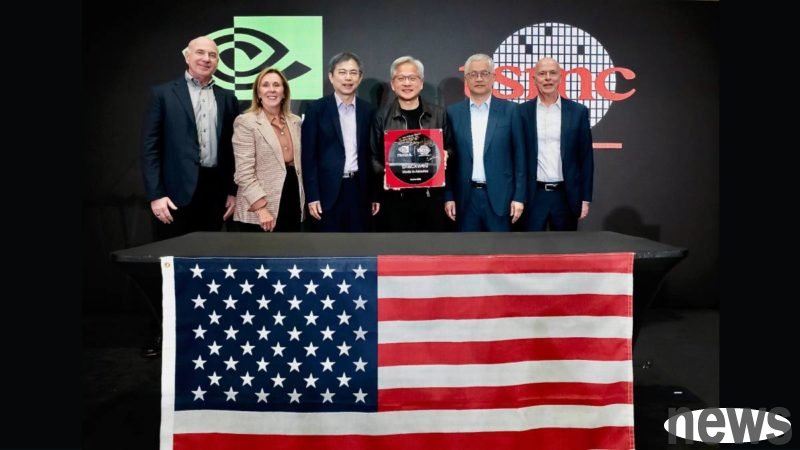TSMC’s Fab 21 factory in Arizona, USA, successfully mass-produced NVIDIA’s (Nvidia) Blackwell wafers for the first time, marking an important milestone in the re-industrialization of US semiconductor manufacturing in recent years. The wafer uses TSM...

TSMC’s Fab 21 factory in Arizona, USA, successfully mass-produced NVIDIA’s (Nvidia) Blackwell wafers for the first time, marking an important milestone in the re-industrialization of US semiconductor manufacturing in recent years. The wafer uses TSMC’s 4N process, which is the world’s leading 4-nanometer process and demonstrates Fab 21’s powerful manufacturing capabilities. Nvidia CEO Jen-Hsun Huang said at the event that this development echoes the "America First" re-industrialization vision promoted by U.S. President Trump in the past, emphasizing the importance of revitalizing U.S. manufacturing and creating jobs.
Although the wafers are manufactured in the United States, the packaging process must still rely on TSMC's CoWoS advanced packaging technology, which is currently mainly located in Taiwan. In particular, the Blackwell data center GPU contains multiple large computing chips and high-speed HBM3e memory stacks, which must be connected through efficient multi-chip packaging. Nvidia's Blackwell GPUs drive the B100, B200 and GB200 accelerators, which consist of a pair of lithography-constrained compute dies that communicate via a 10TB/s NVLink-HBI interconnect.
Currently, all of TSMC’s packaging facilities are located in Taiwan. Although Amkor, a provider of outsourced semiconductor assembly and test services, is building an advanced packaging plant in the United States that is expected to be completed in 2027 or 2028, Nvidia's wafers will most likely go to Taiwan for packaging before then.
In TSMC's third-quarter earnings conference call, CEO Wei Zhejia confirmed the progress of the Amkor project, but the site has just begun construction.
It is worth noting that although Nvidia's most powerful accelerators rely on CoWoS technology, not all Blackwell chips require this technology. For example, the RTX Pro 6000, a 96GB workstation and server card for AI inference, data visualization, and digital twins, does not use a single GPU chip but uses GDDR7 memory, which means Nvidia does not need CoWoS to produce the chip. A similar situation exists with Nvidia's line of RTX gaming cards.
In the long term, Nvidia is not limited to TSMC or Amkor's packaging technology. Nvidia has announced plans to produce TSMC-made GPU chips for Intel customer processors, which will likely leverage Intel's EMIB and/or Foveros advanced packaging technologies. As for the first batch of Blackwell wafers to roll off the Fab21 production line, Nvidia has not disclosed specific information, and relevant inquiries are still ongoing.
Nvidia still needs Taiwan even as TSMC ramps Blackwell production in Arizona Nvidia and TSMC produce the first Blackwell wafer made in the U.S. — chips still need to be shipped back to Taiwan to complete the final product Further reading: The first Blackwell wafer is produced in the United States, and Jen-Hsun Huang visited TSMC’s U.S. factory to celebrate